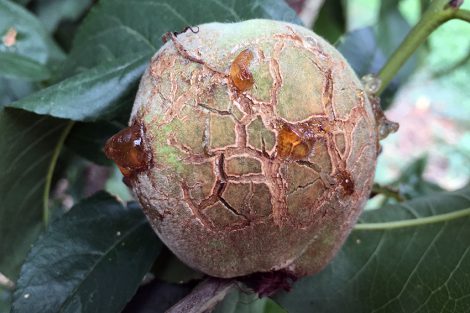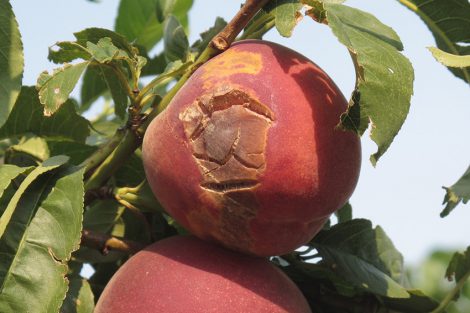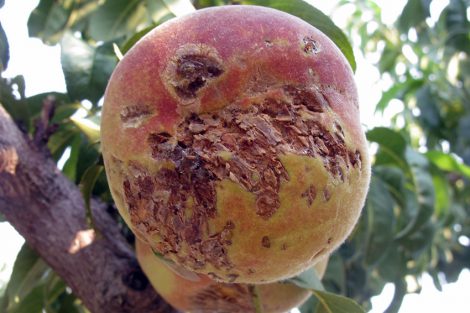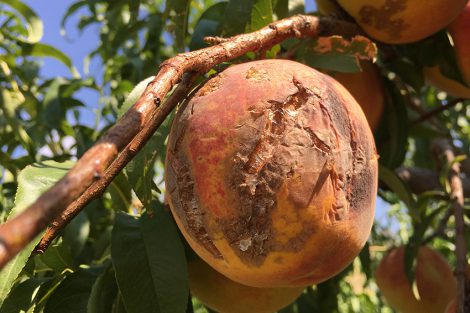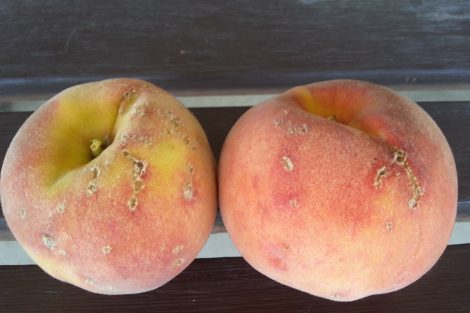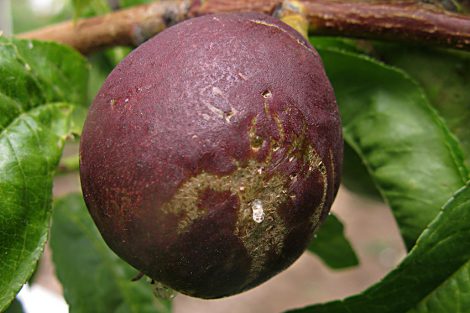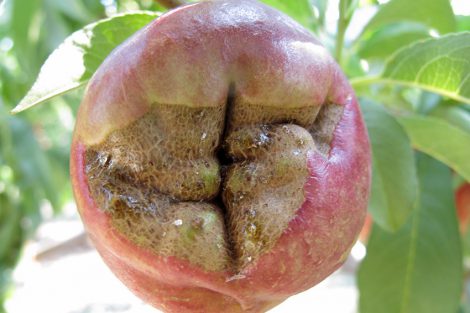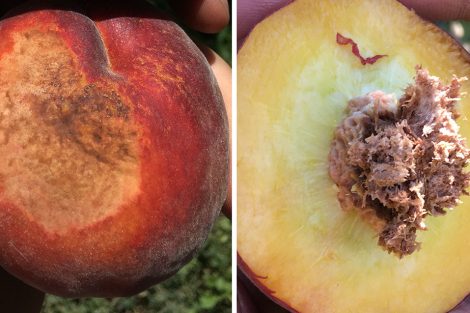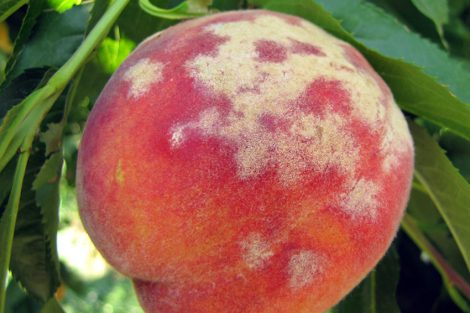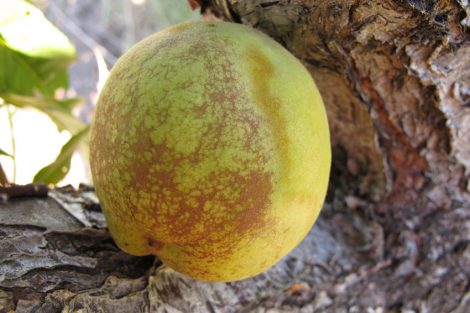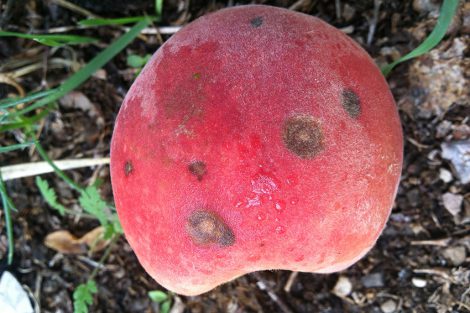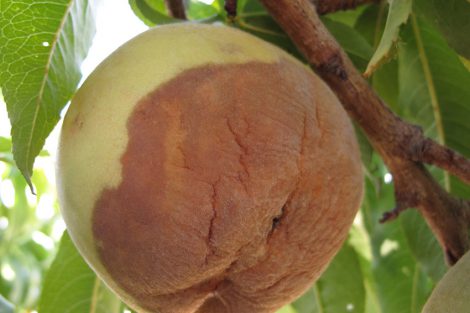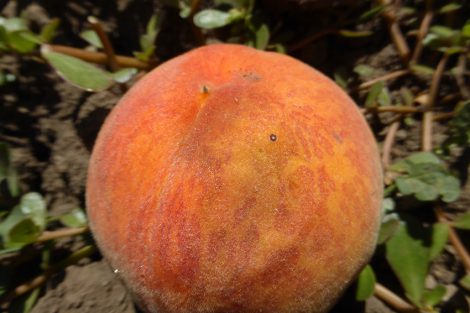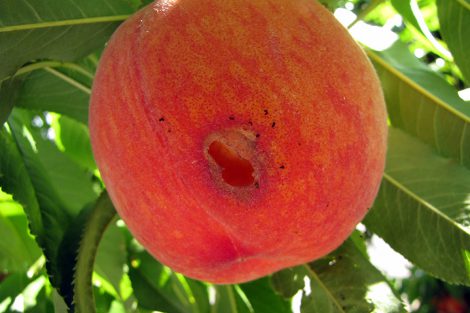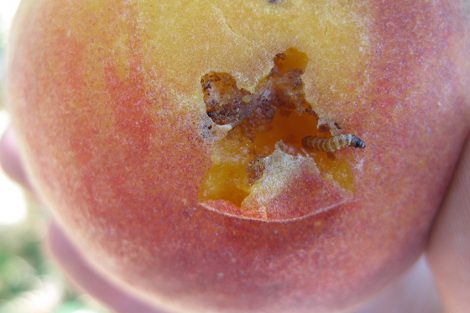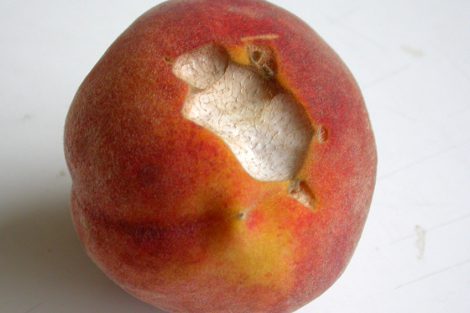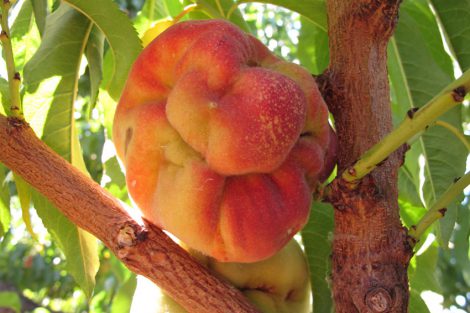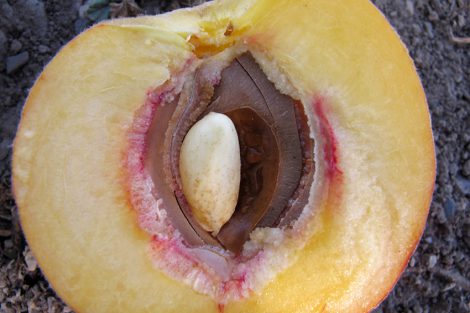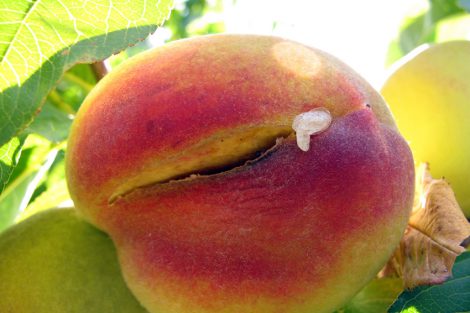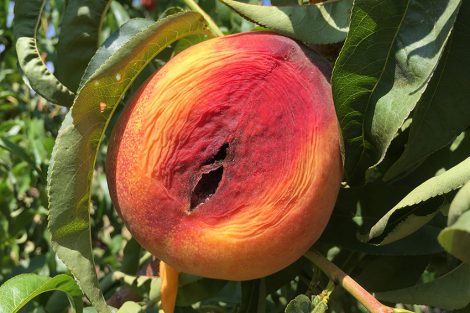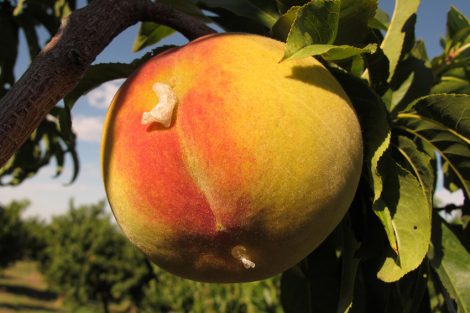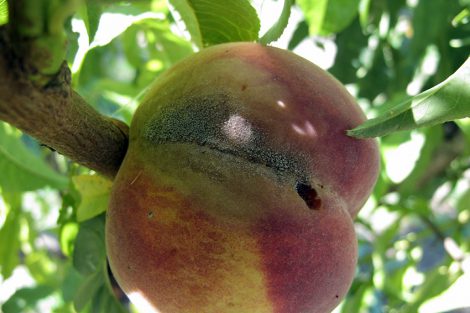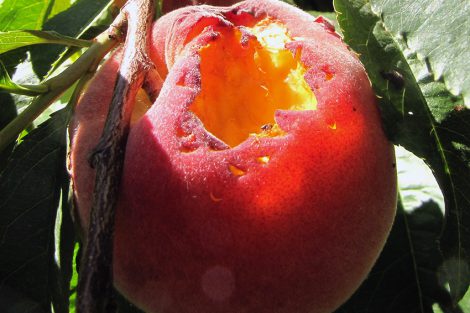In this Issue/What to Watch For
- Codling moth: continue protection until Sept. 15
- White apple leafhopper: nymphs are still active
- Peach twig borer: continue protection until Sept. 15
- Greater peachtree borer: continue protecting lower trunk through end of September
- Peach issues at harvest
- Coryneum blight: avoid late-season infections
APPLE, PEAR INFORMATION
Codling Moth
Keep the fruit protected up until September 15. Around that time, codling moths respond to the shorter day length by converting their resources to overwinter survival.
White Apple Leafhopper
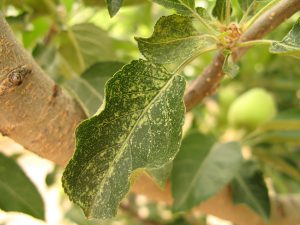
Where present, feeding damage from the second generation of leafhopper nymphs can now be seen on the foliage. Nymphs are active mainly on the undersides of leaves. If your trees had a high population of the first generation, now would be a good time to treat to prevent a nuisance of adults during harvest. Nymphs are easier to treat than the adults because they are less mobile. Adult activity will become very noticeable by late August.
Note that feeding on the foliage will not affect apple yield or tree health.
Treatment
- Backyard growers can use 1% oil, insecticidal soap, Ortho Fruit, Flower, and Vegetable (containing acetamiprid), Safer BioNeem
- Options for commercial growers: click here.
PEACH/NECTARINE INFORMATION
Peach Twig Borer
Like codling moth, keep the peach fruit protected up until Sept 15 (or until harvest).
Greater Peachtree Borer (For Backyard Growers)
Continue to maintain protection of the lower trunk of peach/nectarine and apricot (where necessary) with your last treatment around September 15 (so that the trunk is protected through Oct 15). When you spray, be sure to move mulch or weeds away from the trunk (or even excess soil) because sometimes eggs are laid below grade.
This fall, determine the success of your treatment program by inspecting your trees. Remove dirt from around the base of the tree down to about 4 inches. Look for oozing gum mixed with frass. If you find any symptoms, you will know that you need to improve your control program for next year.
Treatment
Backyard growers can use Hi Yield Permethrin, Sevin, Spectracide Trizicide, or for organic control, products containing spinosad.
Coryneum Blight
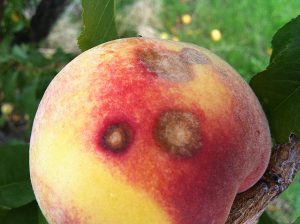
There is no rain in the current 10-day forecast, but Utah can typically expect to see some monsoonal rains late in the growing season. Because of this, keep in mind the risk for coryneum blight infections to happen on softening peaches. These infections look different from early-season infections (see image). Sometimes, the damage will not show up until after harvest.
Protection against late season infections on ripening fruit is particularly important where there is a history of this disease. During the three to four weeks before harvest, be diligent about monitoring your fruit, and apply a protection before a forecasted rainfall.
At least 4 hours of rainfall and temperatures of 70 F to 80°F are optimal conditions for infections. New infections are visible on maturing fruit in a matter of 2 to 5 days, and most often, render the fruit unmarketable. Additional infections can spread rapidly within an orchard or individual tree.
Treatment
- Residential growers can use Spectracide Immunox or Captan.
- Commercial growers options: click here.
Peach Problems Seen at Harvest
Peach harvest is on, and we’ve seen a variety of fruit damage, ranging from wind injury, powdery mildew, coryneum blight, earwigs, birds, and more. Check out the photo gallery to identify what you may be seeing during harvest.

